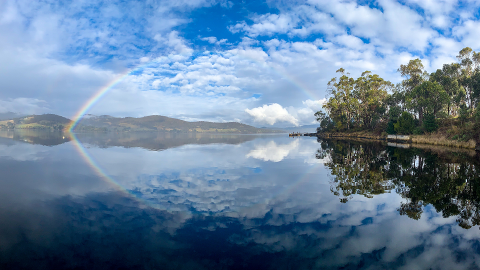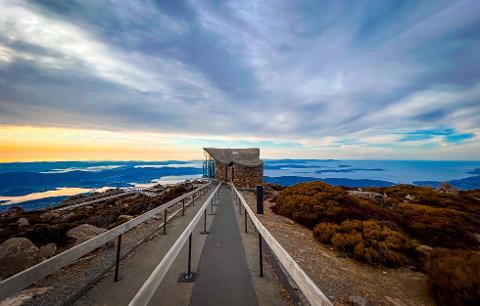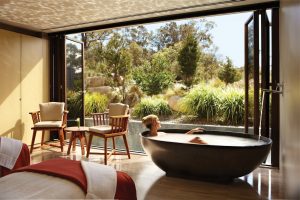







New Norfolk
A small town to really appreciate, and the perfect weekend drive.
WHAT SPARKS YOUR INTEREST?
Found in the south of Tasmania, New Norfolk is located in the heart of the Derwent Valley, straddling the banks of the Derwent River, 30 minutes northwest of Hobart. A charming township, New Norfolk is 32 km from the centre of the capital, an easy drive that will take you along the Derwent River, via the winding Llyell Highway.
New Norfolk is a small town that has held on to its heritage past but also moved firmly with the times into an expanding regional hub. Dotted with eclectic antique stores, historic buildings and green hops fields a little further to the west, it is the perfect stop on your way through to the west coast, or simply for a day trip out of Hobart.
Why would you go?
Highlights of New Norfolk include the old Willow Court precinct, where a range of antiques, a small Sunday market (on every 3rd Sunday of the month), cafes and restaurants are all starting to transform this once sad place into a new era. It's an interesting precinct to wander through, so grand, yet obviously full of haunting stories from when mental health was misunderstood and hospitals were unkind places.
 Soaking in the scenery is an undoubtedly another highlight of New Norfolk. The seasons here are distinctive and are highlighted by the gorgeous trees on the riverbanks and throughout the town. In colder months, the mornings are foggy and still, so no matter what time of year you visit you'll find charm in this little regional town.
Soaking in the scenery is an undoubtedly another highlight of New Norfolk. The seasons here are distinctive and are highlighted by the gorgeous trees on the riverbanks and throughout the town. In colder months, the mornings are foggy and still, so no matter what time of year you visit you'll find charm in this little regional town.
For history buffs, foodies, and those with a small obsession for antiques, New Norfolk should definitely be a stop on your Tasmanian itinerary. A rural area, New Norfolk has remained true to its colonial roots but embraced change and is once again growing as the heartland of the Derwent Valley.
It's impossible to visit New Norfolk and not enjoy learning something about the history of the area. With so many historic buildings and grand accommodation options, you'll feel like you're stepping back in time. Image thanks to: Tourism Tasmania & Rick Eaves.
Getting There
Travelling to New Norfolk by car is an easy way to see the town and will give you opportunities to travel further afield if you're interested in seeing other attractions in the region. There are also bus options available through Derwent Valley Link bus service and O'Driscoll Coaches with their timetables available on their websites.
Accommodation Offerings
There are a range of accommodation options in New Norfolk including lodge and cottage accommodation, glamping, grand historic homesteads with luxury accommodation and hotel/motels. You are truly spoil for choice when it comes to immersing yourself in the history of this area.
Activities and Things to Do and See
New Norfolk has some of the oldest buildings in Australia, so if you're exploring the town it is worth taking the time to peek inside Australian colonial history. New Norfolk has the oldest Anglican church in Australia, the Anglican Church of St. Matthews, built in 1823. The town also contains one of the oldest pubs in Australia, the Bush Inn, continuously licensed since 1825. The Bush Inn is widely thought to be haunted and has an interesting history that is worth exploring during your visit.
The Church of St. Matthews is located opposite Arthur Square and despite having a number of additions and alterations throughout the 1800's there are still original parts remaining and the stained-glass windows are really quite beautiful to view.

Willow Court was originally built as a military hospital in the late 1820's to house invalid convicts. In the 1830's the building was expanded so that it could be used to house the mentally ill from across the colony. The name Willow Court came from the two willow trees that were planted on the site by Lady Jane Franklin, wife of Governor John Franklin who was governor of Van Diemen's Land between 1836 and 1843.
Willow Court operated as an institution until 2000, making it the oldest mental hospital in Australia as well as one of the largest asylums in the Southern Hemisphere. Today the Willow Court complex houses antique stores, a restaurant, a motel, a café and a small community market on Sundays. It is a fascinating place to visit and the buildings and complex itself is quite interesting.
If you have a love of antiques, you'll be so happy you visited New Norfolk. From colonial to art deco era you'll be sure to find something that is perfect for your home in one of the many antique and collectable stores dotted through town. Even if you're not an expert you'll no doubt find yourself drawn into these stores, they are really worth taking a look!
For those who are not beer drinkers it may be surprising that the Derwent Valley and New Norfolk have been central to hops growing in Australia since the 1860's. Driving a short way northwest of New Norfolk you'll be astounded by the beautiful fields of hops and their quaint oast houses which were used to dry and process the hops before being taken to local breweries. This area of Tasmania is still very much central to the hops growing industry in Australia.
 A few minutes north of New Norfolk is the small town of Plenty which houses the Salmon Ponds. The Salmon Ponds is the oldest rainbow and brown trout farm in Australia, gorgeously nestled amongst landscaped gardens. The perfect place to picnic and enjoy the greenery of the area.
A few minutes north of New Norfolk is the small town of Plenty which houses the Salmon Ponds. The Salmon Ponds is the oldest rainbow and brown trout farm in Australia, gorgeously nestled amongst landscaped gardens. The perfect place to picnic and enjoy the greenery of the area.
Back towards Hobart on the Boyer side of the river is the Australian Newsprint Mills. This large industrial factory is a dominating site on the river and has been in operation since 1941. Using hardwood to create newsprint, the factory is an insight into the industrial workings of the area in the 20th and 21st centuries.
Even if you only have a short time, New Norfolk is the perfect stop on the way to Mt. Field National Park or through to the west coast from Hobart. Image thanks to: Tourism Tasmania & Rob Burnett and Tourism Tasmania & Kathryn Leahy.
What to Eat
When you're in New Norfolk, try sampling local fresh produce through the restaurants and cafes, attend a cooking school or try some fresh trout locally grown and produced at the Salmon Ponds. There are also some wineries in the surrounding area so it's worthwhile exploring the outskirts of town.
History
The New Norfolk area was first explored in 1793. It is the third oldest settlement in Tasmania and was originally established following the closure of Norfolk Island as a prison in 1807 and the relocation of residents of the island. Hence the name New Norfolk.
The first house in the area was built in 1807 by Denis McCarty who was a convict converted to police officer. McCarty found himself in charge of over 500 people who had relocated to the New Norfolk area by the end of 1808.
Between 1811 and 1825 the town received a name change to Elizabeth Town after Governor Lachlan Macquarie decided to name it after his wife. The name was returned to New Norfolk by the locals in 1825.
Down on the northern side of the Derwent River at Magra is the grave of Betty King, (originally named Elizabeth Thackery) who was the first white woman to set foot in Australia. She landed at Botany Bay in 1788 as a member of the first fleet.
Environment
 New Norfolk and the surrounding countryside is truly beautiful. In autumn the trees lining the banks of the Derwent River turn golden and no matter what time of year the reflections from the river make you feel like you've entered a sleepy town, worlds away. Image thanks to: Tourism Tasmania and Veronica Youd
New Norfolk and the surrounding countryside is truly beautiful. In autumn the trees lining the banks of the Derwent River turn golden and no matter what time of year the reflections from the river make you feel like you've entered a sleepy town, worlds away. Image thanks to: Tourism Tasmania and Veronica Youd
Useful Information/Local Tips
In summertime you'll often see water skiers using the river and it's also a great place to have a paddle in your kayak.
What's Nearby
After visiting New Norfolk, why not head up to Mt. Field National Park to see the fabulous Russell Falls?

































































































